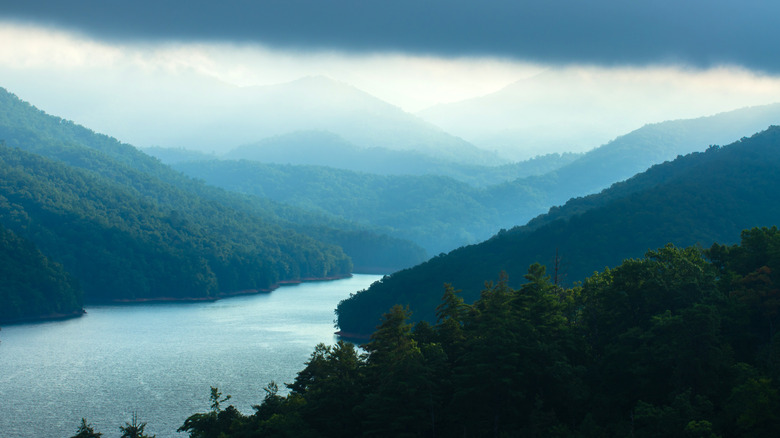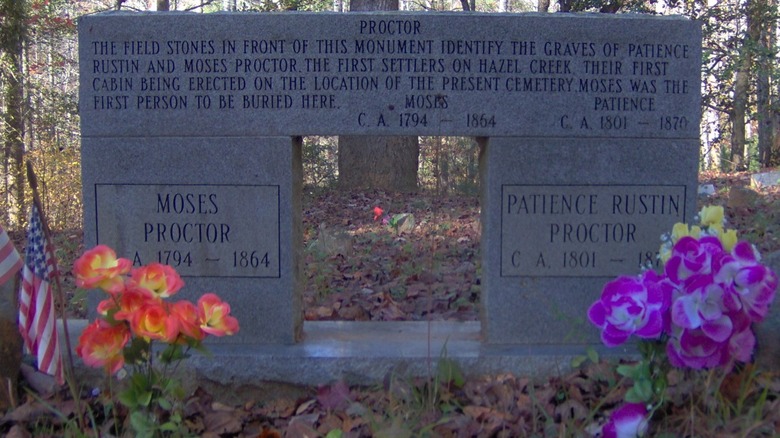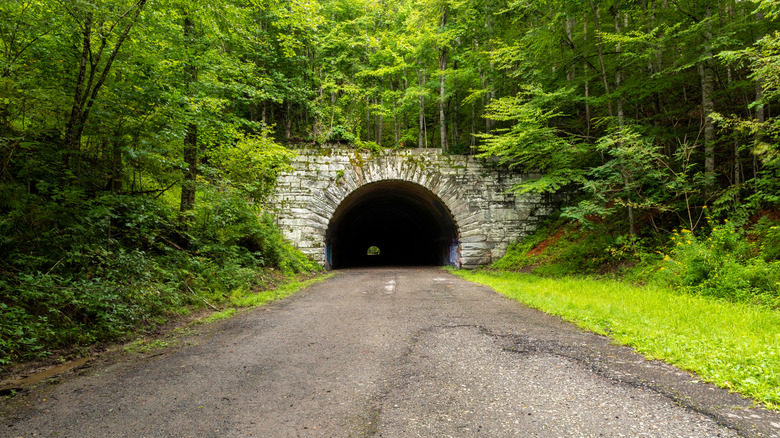A Once-Thriving North Carolina Lumber Town Is Now An Abandoned Destination With Eerie History And Fishing
Throughout the Great Smokies and the eponymous national park, there are scattered remnants of forgotten towns, like Lost Cove, now only reachable by a long hike, or Elkmont, a once-thriving resort town that's now an eerie gem with abandoned cabins and serene trails. And then there are the "underwater ghost towns of Appalachia," most of which were submerged by the manmade Fontana Lake, created by damming part of the Little Tennessee River in North Carolina.
One of these towns, Proctor, along the picturesque banks of Hazel Creek (a tributary of the Little Tennessee River), was almost completely submerged, except for its cemetery and a few leftover buildings. While the residents, after being relocated, were told they'd eventually be able to return to the site of Proctor via a government-built road, this never occurred.
An entire 6-mile section of the road was completed before the project was abandoned, leaving what is now known as the "Road to Nowhere." Former citizens of Proctor are still ferried across Fontana Lake by the National Park Service (NPS) to visit their loved ones in the cemetery on important holidays like Decoration Day (occurring around the federally recognized holiday in May, Memorial Day). The Road to Nowhere? Despite extensive lobbying, it will likely always remain a lost boulevard, just like the Lost Town of Proctor.
Nowadays, Proctor lies within the protected borders of Great Smoky Mountains National Park and is only visited by relatives, intrepid park explorers, and fishermen. Hazel Creek, which still runs along the remains of the town, is considered one of the park's best fishing spots, especially for trout.
How Proctor became an underwater ghost town
Out of every national park in America, the Great Smoky Mountains is the most visited. However, there are still plenty of hidden gems. And the remains of Proctor certainly apply: it's only accessible by backcountry trail or by boat. From the Fontana Dam, it's a 12-mile hike — both ways! — to Proctor, while a boat can be rented from the Fontana Village Marina.
If you're able to reach Proctor, all you'll find is the old Calhoun House, graves, and the old Ritter Lumber Mill. This serene, hard-to-reach spot — home to several peaceful backcountry camping spots and the park's best fishing — was once a thriving little town. Established in 1886, Proctor boomed along with the rising lumber industry until the 1930s. The Great Depression and the decline of the lumber market contributed to slowing growth in Proctor until a fateful day in 1941, when everything changed.
It's hard to imagine that the December 1941 bombing of Pearl Harbor in Hawaii could have such an impact on a little Appalachian town thousands of miles away. However, once the United States officially joined World War II, more electricity was necessary to support new weapons labs, including the top-secret Oak Ridge, just miles from Proctor. To aid in the war efforts, the Tennessee Valley Authority built the hydroelectric Fontana Dam in 1943. The flooding created Fontana Lake and submerged communities along Hazel Creek. Locals were resettled, most of the town was submerged, and the only road (Highway 288) was washed out. Several years later, Fontana Lake became part of the new Great Smoky Mountains National Park. And so Proctor became an underwater ghost town deep in the mountains of North Carolina.
The Road to Nowhere
Yet the former residents of Proctor didn't (couldn't) forget about their former home, and especially about the graves of their loved ones. During their relocation, Proctor residents were promised a new 30-mile road that would traverse along the new Fontana Lake, to enable easier visitation of Proctor's abandoned cemeteries. However, said road never came to fruition. Six miles of it were completed before the project was abandoned, leaving an eerie tunnel in the middle of the forest. Officially designated "Lakeview Drive," it's known locally as the Road to Nowhere.
Thanks to years of lawsuits, the Park Service still annually shuttles former Proctor residents and visitors across the lake to the old cemeteries every year on Decoration Day, partly because the access road never materialized. Visitors usually share a meal, explore the overgrown cemeteries, and hike along the north shore of Fontana Lake. A former resident notes that "thanks to the Parks preservation, I can go home again. It's sort of bittersweet. If they had built the road, what would it be like today? ... You don't know, but I am glad it's preserved ... when you walk into Proctor, even as a stranger, I'll tell you this: you feel at home ... there's something about that area. There's a calming, peaceful feeling that makes you feel like maybe you belong, too" (via wlos.com). Definitely something worthy of preservation.


